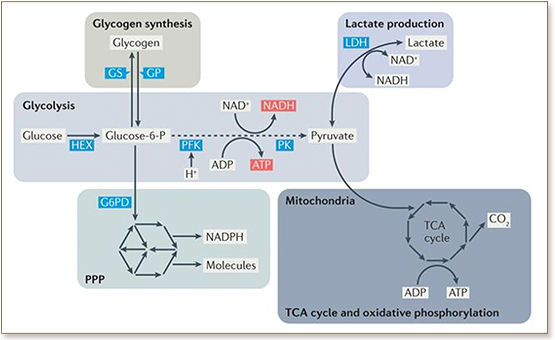 Lactate in the brain has long been associated with ischaemia; however, more recent evidence shows that it can be found there under physiological conditions. In the brain, lactate is formed predominantly in astrocytes from glucose or glycogen in response to neuronal activity signals. Thus, neurons and astrocytes show tight metabolic coupling. Lactate is transferred from astrocytes to neurons to match the neuronal energetic needs, and to provide signals that modulate neuronal functions, including excitability, plasticity and memory consolidation. In addition, lactate affects several homeostatic functions. Overall, lactate ensures adequate energy supply, modulates neuronal excitability levels and regulates adaptive functions in order to set the 'homeostatic tone' of the nervous system.
Lactate in the brain has long been associated with ischaemia; however, more recent evidence shows that it can be found there under physiological conditions. In the brain, lactate is formed predominantly in astrocytes from glucose or glycogen in response to neuronal activity signals. Thus, neurons and astrocytes show tight metabolic coupling. Lactate is transferred from astrocytes to neurons to match the neuronal energetic needs, and to provide signals that modulate neuronal functions, including excitability, plasticity and memory consolidation. In addition, lactate affects several homeostatic functions. Overall, lactate ensures adequate energy supply, modulates neuronal excitability levels and regulates adaptive functions in order to set the 'homeostatic tone' of the nervous system.